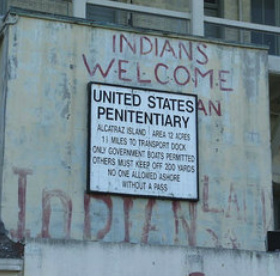Further Reading
Troy R Johnson, The American Indian Occupation of Alcatraz: Red Power and Self-Determination. University of Nebraska Press: 2008. Eagle Adam Fortunate. Alcatraz! Alcatraz!: the Indian Occupation of 1969-1971. Heyday Books, 1992 Paul Chaat Smith and Robert Allen Warrior. Like a Hurricane: The Indian Movement from Alcatraz to Wounded Knee. New York: New York Press, 1996 Dean J Kotlowsi, "Alcatraz, Wounded Knee, and Beyond: The Nixon and Ford Administrations Respond to Native American Protest." Pacific Historical Review Vol. 72, no. 2 (May 2002), pp. 201-227 Jack D Forbes, Native Americans and Nixon: Presidential Politics and Minority Self-Determination, 1969-1972. Native American Politics Series, No 2 Los Angeles: American Indian Studies Center, 1981 Music: "Evening Melodrama" by Kevin MacLeod (www.incompetech.com)
0 Comments
Leave a Reply. |
Site Map |
© 2013-2024 Footnoting History. All rights reserved.
Footnoting History and the Footnoting History logo
are trademarks of Footnoting History, NY. Footnoting History operates under a SAG-AFTRA Micro-Monetized Podcast Agreement. |


